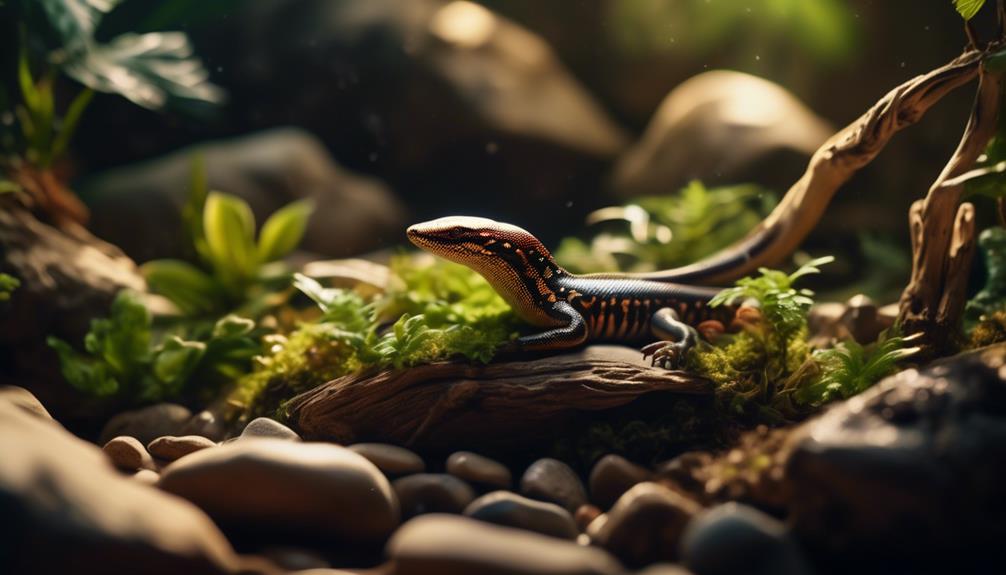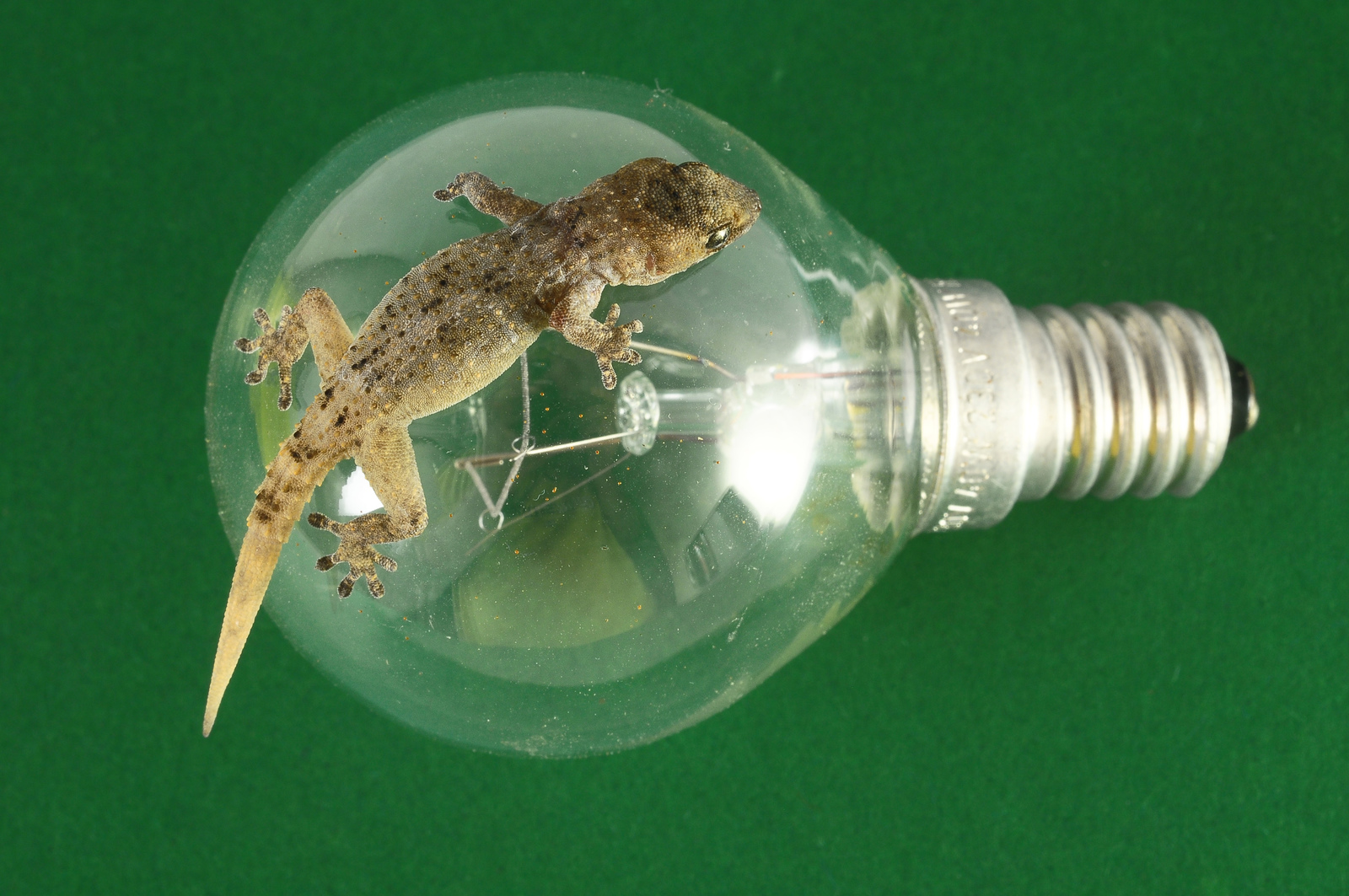Are you ready to dive into the fascinating world of juvenile blue-tongued skink care?
Get ready to nurture the next generation of these remarkable reptiles with our comprehensive guide.
From providing the perfect diet and creating their ideal habitat to handling techniques and monitoring their growth and development, we've got you covered.
So, grab your metaphorical gardening gloves and let's embark on this scientific journey together, serving these amazing creatures and ensuring their well-being.
Key Takeaways
- Juvenile blue-tongued skinks require a balanced and varied meal plan consisting of animal protein, fruits, vegetables, and calcium-rich supplements.
- Creating the perfect habitat for juvenile blue-tongued skinks involves providing a spacious enclosure with substrate that mimics their natural habitat, maintaining ideal temperature and humidity levels, and using thermostat-controlled heat mats or ceramic heat emitters.
- Proper nutrition is essential for the health of juvenile blue-tongued skinks, and their diet should consist of animal protein and vegetables. Common health problems include respiratory infections, mites, and metabolic bone disease.
- When handling juvenile blue-tongued skinks, it is important to approach slowly and calmly, use both hands to support their body, avoid excessive squeezing, and gradually introduce them to handling while building trust through short sessions and increased duration.
Essential Diet Requirements for Juvenile Blue-Tongued Skinks
Are you wondering what the essential diet requirements are for your juvenile blue-tongued skink? Proper nutrition is crucial for the healthy growth and development of your skink.
When it comes to the diet of a juvenile blue-tongued skink, you need to ensure a balanced and varied meal plan. Their diet should consist of a mixture of animal protein, fruits, vegetables, and calcium-rich supplements.
Feeding your skink should follow a regular schedule, offering food every day or every other day. For protein, options include insects like crickets, mealworms, and roaches, while fruits and vegetables like berries, leafy greens, and squash provide essential vitamins and fiber.
Calcium supplementation is vital, as it aids in the growth of strong bones and prevents metabolic bone disease. Meal size should be appropriate for their age and size, and feeding techniques should involve providing food in a shallow dish or using tongs to offer live prey.
Following these guidelines will help ensure a healthy diet for your juvenile blue-tongued skink.
Creating the Perfect Habitat for Your Juvenile Blue-Tongued Skink
Make sure you set up the perfect habitat for your juvenile blue-tongued skink to thrive in. A proper enclosure setup is crucial for the health and well-being of your pet.
Start by choosing a spacious enclosure that allows your skink to move around freely. Provide a substrate that mimics their natural habitat, such as reptile carpet or bark chips.
Temperature and humidity are essential factors to consider. The ideal temperature range for juvenile blue-tongued skinks is 80-85°F during the day, with a slight drop at night. Use a thermostat-controlled heat mat or ceramic heat emitter to achieve and maintain this temperature.
Humidity levels should be kept around 40-50%. This can be achieved by misting the enclosure daily and providing a shallow water dish.
Remember to monitor the temperature and humidity levels regularly to ensure the optimal living conditions for your skink.
Health Considerations and Common Issues in Juvenile Blue-Tongued Skinks
When caring for your juvenile Blue-Tongued Skink, it's important to be aware of health considerations and common issues that may arise. Providing proper nutrition is essential for their overall well-being. Blue-Tongued Skinks are omnivores and require a diet that consists of both animal protein and vegetables.
Offer a variety of insects such as crickets, mealworms, and waxworms, along with dark leafy greens, fruits, and vegetables. It's important to monitor their eating habits and adjust their diet accordingly.
Common health problems in juvenile Blue-Tongued Skinks include respiratory infections, mites, and metabolic bone disease. Regular vet check-ups and maintaining proper temperature and humidity levels in their habitat can help prevent these issues.
If you notice any signs of illness, such as loss of appetite, lethargy, or skin abnormalities, seek veterinary care promptly to ensure the health and well-being of your skink.
Proper Handling Techniques for Juvenile Blue-Tongued Skinks
To ensure a positive interaction with your juvenile Blue-Tongued Skink, gently hold them using both hands and securely support their body. Proper handling techniques are crucial for the well-being of your skink and promoting a bond between you and your pet. Here are four important handling techniques to keep in mind:
- Approach with care: Approach your skink slowly and calmly to avoid startling them. Make sure they see your hand before attempting to pick them up.
- Support the body: Use both hands to support your skink's body, with one hand gently holding the front part of their body and the other hand supporting the hind part.
- Avoid excessive squeezing: While it's important to have a secure hold on your skink, avoid squeezing too tightly as it can cause discomfort or injury.
- Gradual introduction: When introducing your skink to handling, start with short sessions and gradually increase the duration over time. This will help them become more comfortable and build trust.
Growth and Development: Monitoring Your Juvenile Blue-Tongued Skink
Keep an eye on the growth and development of your juvenile Blue-Tongued Skink by regularly measuring their length and weight. Monitoring these factors will help you ensure that your skink is growing at a healthy rate. As juveniles, Blue-Tongued Skinks experience rapid growth, so it's important to track their progress.
Measure their length from the tip of their snout to the end of their tail, and record their weight using a reliable scale. By doing so, you can track their growth over time and identify any potential issues early on.
Additionally, observing their behavior is crucial to understanding their development. Encouraging natural behaviors, such as basking, exploring, and foraging, is essential for their physical and mental well-being. Providing an enriched environment with appropriate hiding spots and opportunities for exercise will help promote their natural behaviors and overall development.
Frequently Asked Questions
How Long Does It Take for a Juvenile Blue-Tongued Skink to Reach Adulthood?
It usually takes about 2-3 years for a juvenile blue-tongued skink to reach adulthood. The growth rate of a juvenile skink is influenced by factors such as diet, temperature, and overall health.
Can Juvenile Blue-Tongued Skinks Be Housed Together?
Can juvenile blue-tongued skinks be housed together? Absolutely! They thrive in social environments and benefit from companionship. However, ensure proper space and individual needs are met to prevent aggression and stress.
What Are the Signs of a Healthy Juvenile Blue-Tongued Skink?
To ensure your juvenile blue-tongued skink is healthy, look for signs like clear eyes, smooth skin, and a healthy appetite. Common health issues to watch out for include respiratory infections and parasites.
Are There Any Specific Plants That Should Be Avoided in the Habitat of a Juvenile Blue-Tongued Skink?
To keep your juvenile blue-tongued skink safe, avoid toxic plants in their habitat. Some plants can harm them, but don't worry – there are plenty of safe options to create a suitable environment for your little one.
How Often Should a Juvenile Blue-Tongued Skink Be Handled to Ensure Proper Socialization?
To ensure proper socialization, handle your juvenile blue-tongued skink regularly. It's essential for their development and their ability to interact with humans. The frequency of handling will vary based on their age and temperament.
Conclusion
In conclusion, providing proper care for juvenile blue-tongued skinks is essential for their growth and development. By ensuring they have a balanced diet, a suitable habitat, and regular health checks, you can promote their well-being.
Additionally, handling them correctly and monitoring their growth allows you to track their progress. So, why wait? Start nurturing the next generation of blue-tongued skinks and witness their fascinating journey of life.
Will you be the one to witness their incredible transformation?


